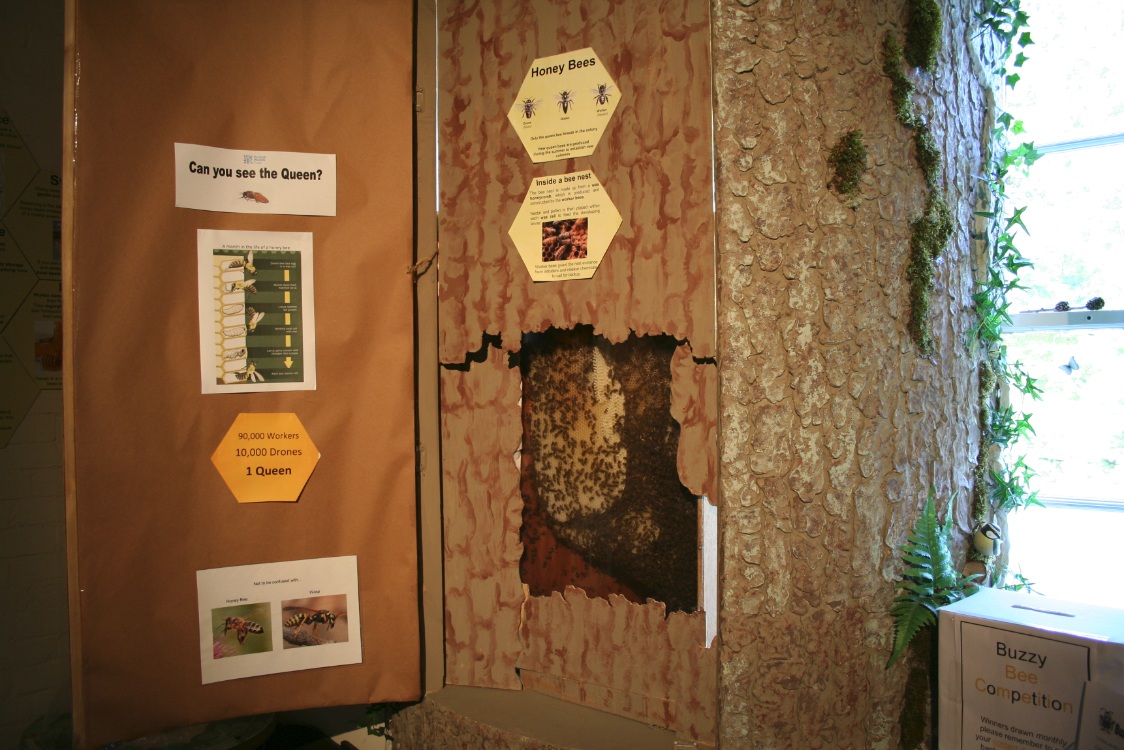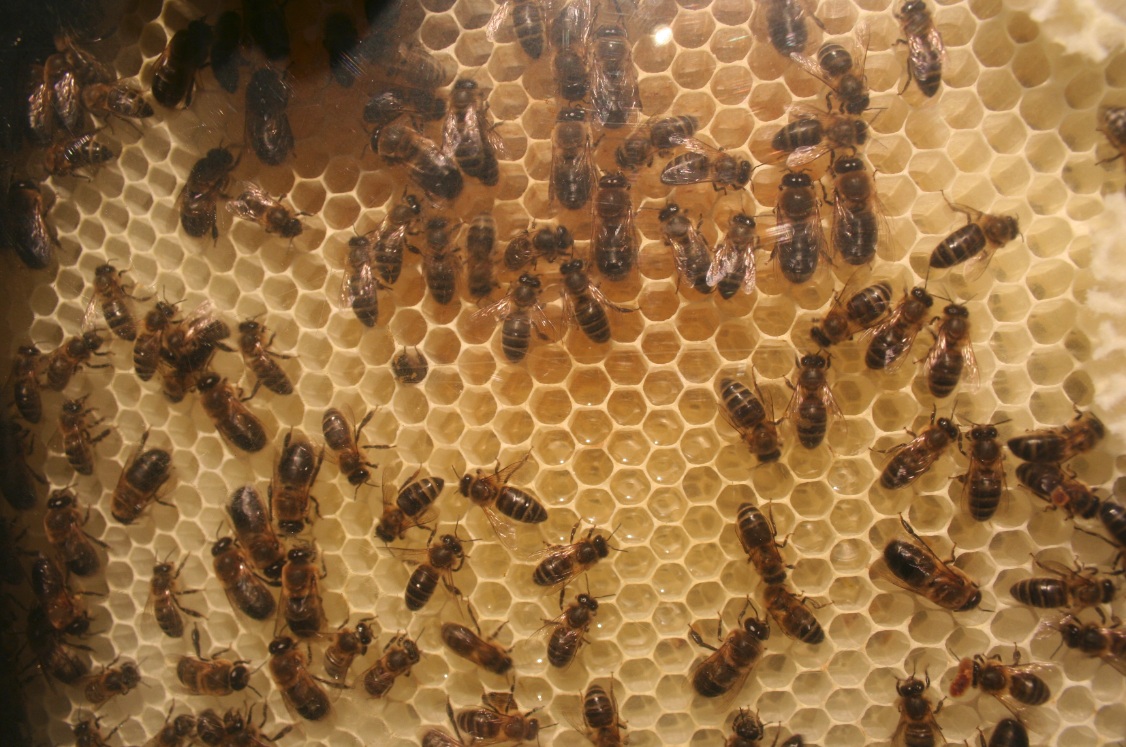Massive bee colony in the visitor centre
Our resident bee colony here in the visitor centre has been described by local expert and hive owner as the largest colony of its type that he has ever seen. Brian Pool, a beekeeper with over 40 years’ experience says the colony which now houses an estimated 100,000 bees is the largest colony he had ever witnessed that had not swarmed. The hive was established in May this year by Brian, who initially brought 30,000 bees. The hive is behind protective clear Perspex, so visitors can safely see the bees making honey before their eyes!

Our honey bee exhibit has grown massively in such a short space of time. In the two months that it has been here it has more than trebled in size, but unusually, it has not swarmed. Swarming is a process in which the queen and about sixty percent of the original worker bees will leave the hive to create a new hive. The existing hive will then have a new queen. This is a natural means of reproduction in honey bee colonies. The unusual thing about our hive is that it is now large enough to split into two more hives rather than the usual one.

Our 100,000 bee colony is currently made up of 90,000 worker bees, 10,000 drones and 1 queen bee. Brian has been so impressed with the size and condition of our resident colony that he has informed the Beekeepers’ Association of this fantastic spectacle.

Visitors can come and see the bees in our exhibition for a small fee and members can go in for free. We also sell the honey in our shop.
Lyndsay – Visitor Centre Manager
Help protect Scotland’s wildlife
Our work to save Scotland’s wildlife is made possible thanks to the generosity of our members and supporters.
Join today from just £3 a month to help protect the species you love.
Preface
Our resident bee colony here in the visitor centre has been described by local expert and hive owner as the largest colony of its type that he has ever seen. Brian …
